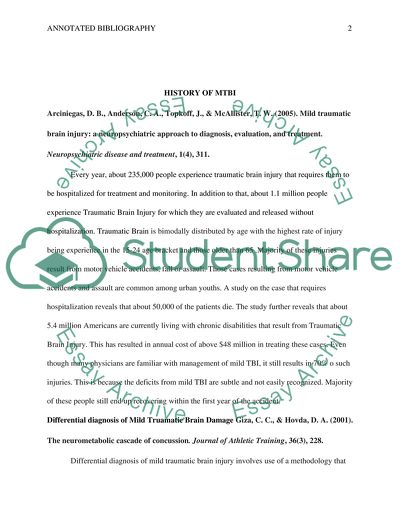Cite this document
(“Mild Traumatic Brain Injury (concussion) Annotated Bibliography”, n.d.)
Retrieved de https://studentshare.org/psychology/1651150-mild-traumatic-brain-injury-concussion
Retrieved de https://studentshare.org/psychology/1651150-mild-traumatic-brain-injury-concussion
(Mild Traumatic Brain Injury (concussion) Annotated Bibliography)
https://studentshare.org/psychology/1651150-mild-traumatic-brain-injury-concussion.
https://studentshare.org/psychology/1651150-mild-traumatic-brain-injury-concussion.
“Mild Traumatic Brain Injury (concussion) Annotated Bibliography”, n.d. https://studentshare.org/psychology/1651150-mild-traumatic-brain-injury-concussion.


